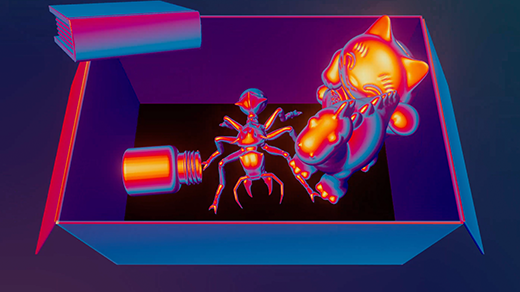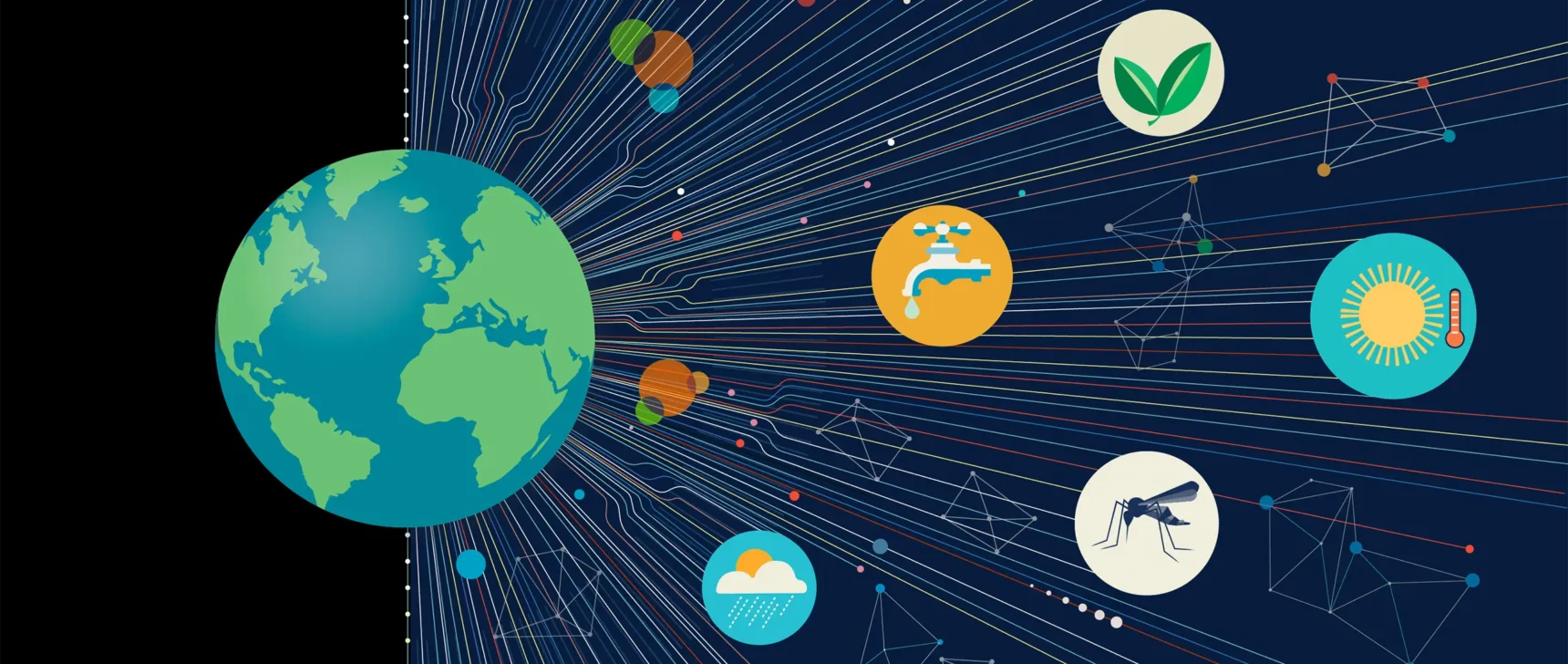The Biggest-Ever Digital Camera Is This Cosmologist’s Magnum Opus
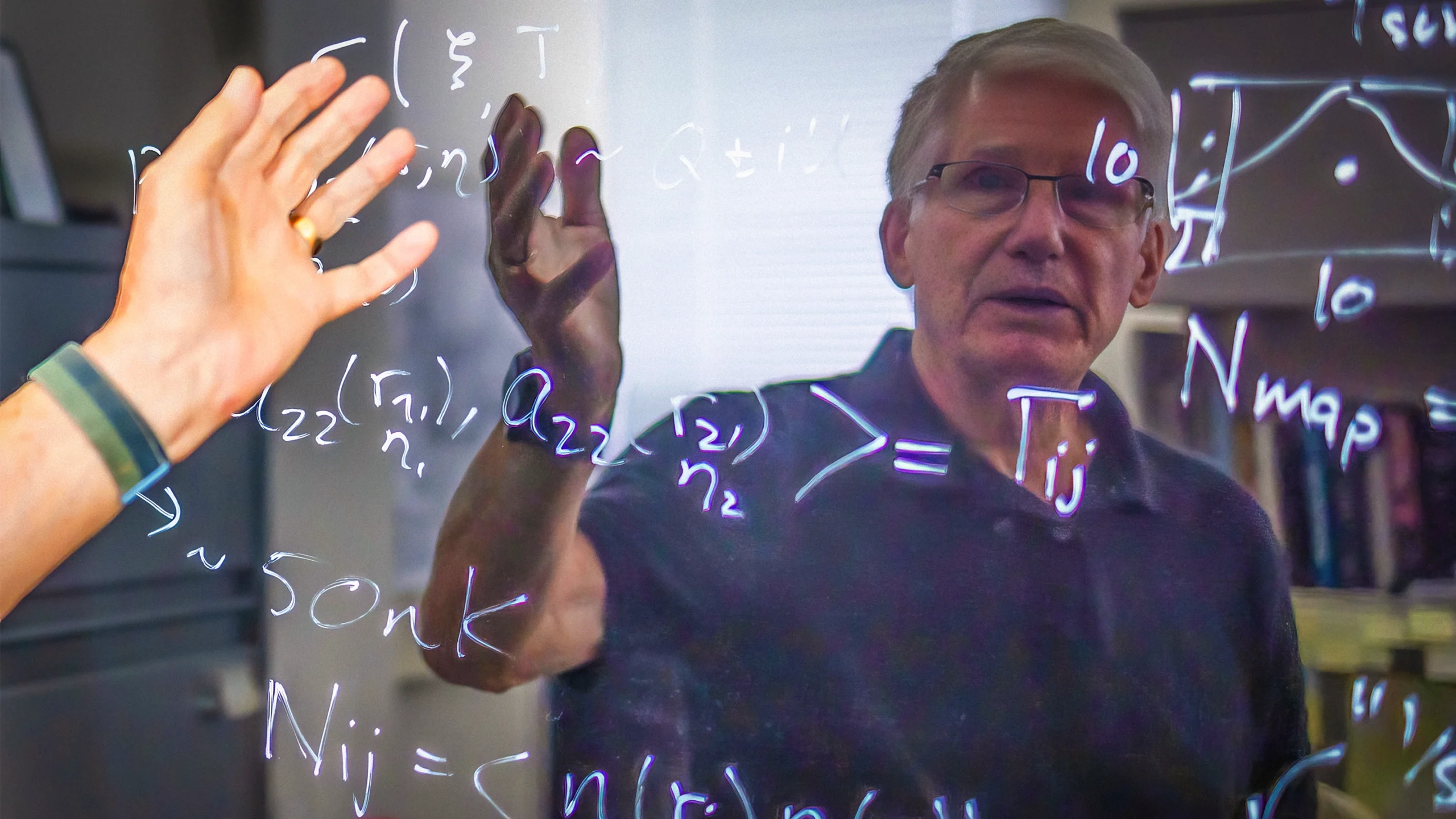
For decades, Tony Tyson has been building increasingly large CCD cameras for astronomy.
Rachel Bujalski for Quanta Magazine
Introduction
On June 23, 2025, Tony Tyson joined a presentation in Washington, D.C., to unveil an image almost 30 years in the making: 10 million galaxies poised on an inky black backdrop. To appreciate each galaxy in detail, you’d have to stretch the picture across 400 TVs. It’s the first portrait of the cosmos delivered by the Vera C. Rubin Observatory, a new astronomical facility built by the United States on a mountain in Chile. And it captures just 0.05% of the galaxies that the observatory’s mammoth camera will record over the next decade.
That camera is ushering in an ultra-vivid new era of astronomy; it’s also Tyson’s magnum opus.
Tyson, a cosmologist at the University of California, Davis and the chief scientist of the Rubin Observatory, was working at Bell Labs in the 1970s when he encountered a novel imaging chip called a charge-coupled device (CCD) and realized that it could revolutionize the study of the universe. By converting incoming light into electrical signals, CCD sensors are well suited for detecting faint, distant objects in the cosmos. Tyson used the technology to make the first high-resolution map of dark matter, the mysterious, heavy substance that binds galaxies together like an invisible glue.
Then, in the 1990s, other astronomers used one of Tyson’s CCD cameras to study the expansion of the universe and discovered what seemed like a mistake at the time: The expansion was ramping up. The peculiar acceleration revealed the presence of dark energy.
Today, dark matter and dark energy — together composing 95% of the contents of the universe — remain utter mysteries. Even in the 1990s, Tyson knew that to illuminate these dark entities, he’d need to study them with a bigger camera, so he founded the project that has become the Rubin Observatory. Now 85, he is finally introducing his brainchild to the world.
An array of 189 CCDs totaling 3.2 billion pixels, the Rubin Observatory’s Legacy Survey of Space and Time (LSST) camera is the largest digital camera ever built. Over the next 10 years, it will repeatedly photograph approximately 20 billion galaxies. Among other things, the photo album will chronicle the convoluted history of how dark matter and dark energy conspired to carve out the structure of our universe.
Quanta Magazine spoke with Tyson both before and on the day of the image release. Our conversation about dark matter, dark energy and the decades-long development of the Rubin Observatory has been edited and condensed for clarity.
Can you walk me through how you created a map of dark matter?
I was always interested, even as a kid, in measuring things that were almost undetectable — really, really faint signals, first in the radio and then optical wavelengths. Bell Labs gave me free rein to engineer new systems that would detect those extremely faint signals. One day, George Smith [co-inventer of the charge-coupled device] came into my office and said, “You know, with your interest in astronomy, you might be interested in this.” It was this little thing that was a couple millimeters long, known nowadays as a CCD.
At the time, I was really interested in how galaxies look like they’ve been moved by all of this invisible dark matter in between us and them. The galaxy’s light gets distorted by the gravity of the dark matter, so the image of the galaxy becomes elongated, turning into a little arc. So I developed a very simple detector with CCDs that looks for this telltale arc-iness around the sky. The term is called weak gravitational lensing. When you detect the mirage, you can invert the map to see the distribution of the dark matter.
And how did you aid in the discovery of dark energy?
I built the Big Throughput Camera, which at the time was the largest CCD camera in the world. My intention was to try to put it on the largest telescope I could get my hands on, which was a telescope operated by the U.S. National Science Foundation in Chile. We had a bunch of observing time to do whatever we wanted, but we also supported other groups.
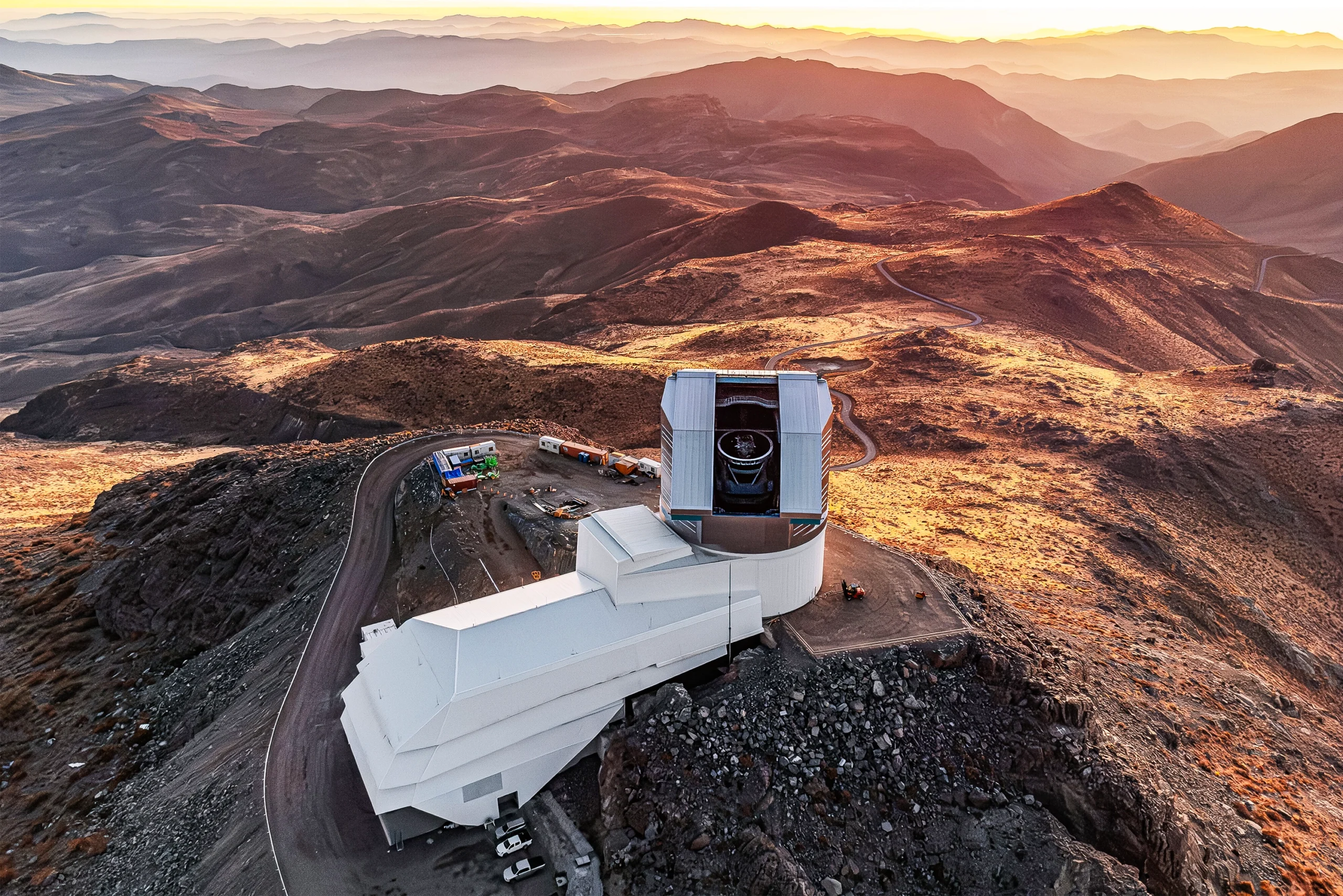
The Vera C. Rubin Observatory, a joint project of the U.S. National Science Foundation and Department of Energy, sits on Cerro Pachón, a mountain in Chile.
RubinObs/NOIRLab/SLAC/NSF/DOE/AURA
There were two groups that were looking for supernovae to see how rapidly the universe was expanding. Everybody knew — or thought they knew — that the universe was slowing down because of all its dark matter. These groups discovered what they thought was the wrong answer: The expansion of the universe was actually accelerating for the past billion years. For galaxies to speed away from each other ever faster, they need to be propelled by some force — by a stretching of the underlying space-time. The energy that’s causing space to stretch is what we called dark energy.
Why did you think the world needed an observatory like Rubin?
It seemed like a no-brainer. We don’t understand 95% of our universe. That’s sort of mind-boggling.
And I said, “We can do better than this. We can build a larger telescope by making larger mosaics of larger CCDs.” We had to invent a new kind of CCD because we needed information from outside the visible spectrum of light, all the way from the ultraviolet to the near-infrared. And we needed to develop really clever software that could reveal the answer. But by the year 2000, it was clear that this whole thing might really happen.
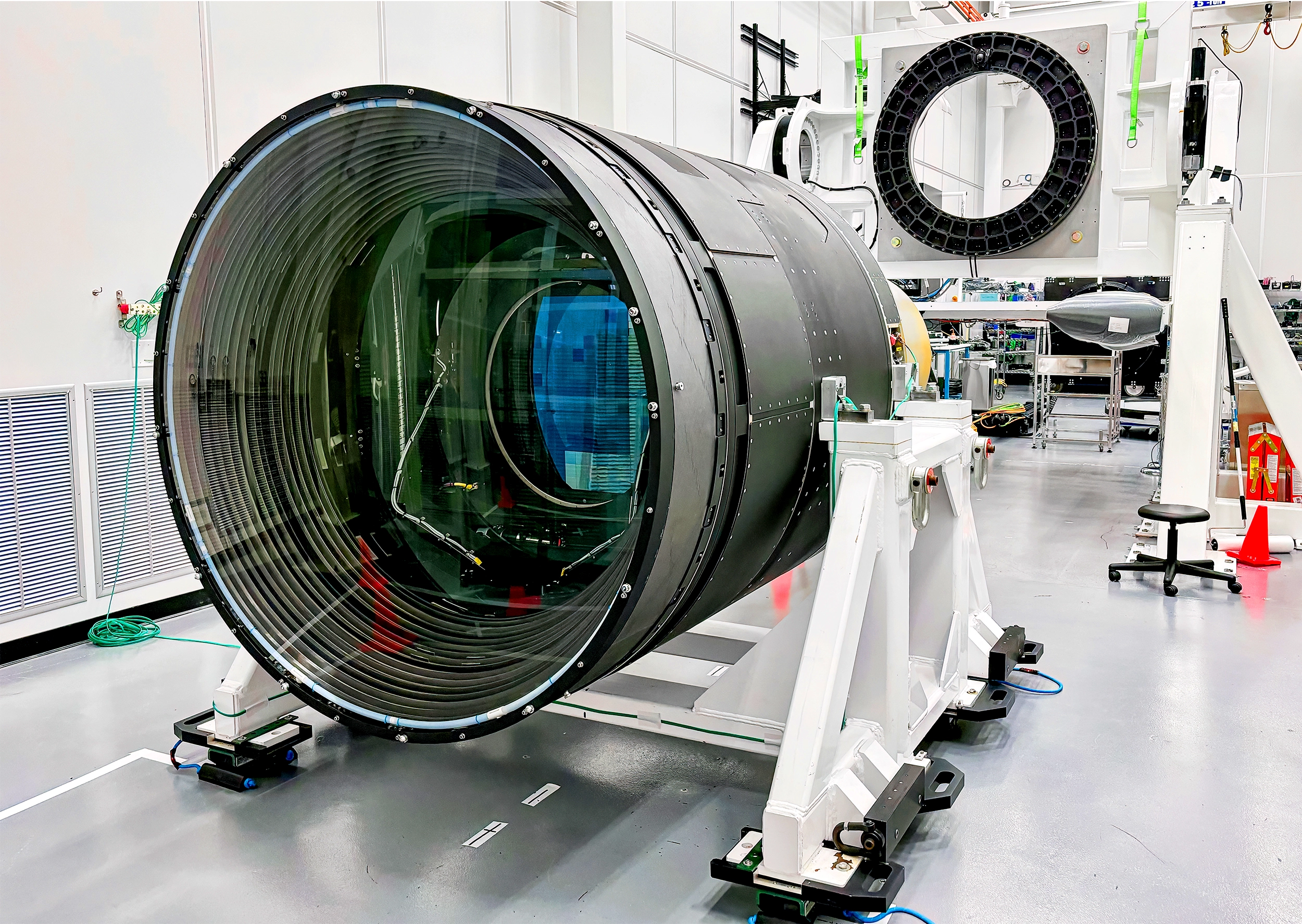
The LSST camera, seen before its installation, weighs about as much as an SUV.
RubinObs/NOIRLab/SLAC/NSF/DOE/AURA/T. Lange
How did you sell the idea to the rest of the world?
Every 10 years, the U.S. physics and astronomy communities have a big competition, taking suggestions for the next big facility they should build. They really liked my idea that I called the Dark Matter Telescope — because that’s what I wanted to do with it. But they didn’t like the name because it could do so many other things, like detect earth-threatening asteroids. Cleverly, I put a picture of an Earth-threatening asteroid on the last page of my proposal. They really liked that.
So they changed the name to the Large Synoptic Survey Telescope. And we all rushed to the dictionary to look up the word “synoptic.” Nobody ever liked it. And so recently, after our friend Vera Rubin — who helped confirm the existence of dark matter — died, we renamed the facility after Vera.
The sky survey itself is still called the LSST, but now we say it stands for the Legacy Survey of Space and Time.
Tell me about the LSST and its scientific goals.
The camera weighs about as much as a small SUV. It has 3,200 megapixels in the focal plane. It sits up in the middle of the three-mirror telescope that we eventually designed. With every 30-second exposure we take of a patch of the sky, we will issue to the world an alert on anything that has changed in that patch. And we expect to have about 8 million to 10 million of those changes every night — these new things that were not there before, such as faraway exploding objects or new asteroids or comets.
The camera will also give us much nicer, high-precision maps of the dark matter. That’s important because it tells us how clumps of dark matter have evolved from diffuse forms to stringy shapes as the universe has aged, which helps constrain dark matter’s properties. This is enabled by weak gravitational lensing, a technique I pioneered in the 1980s.
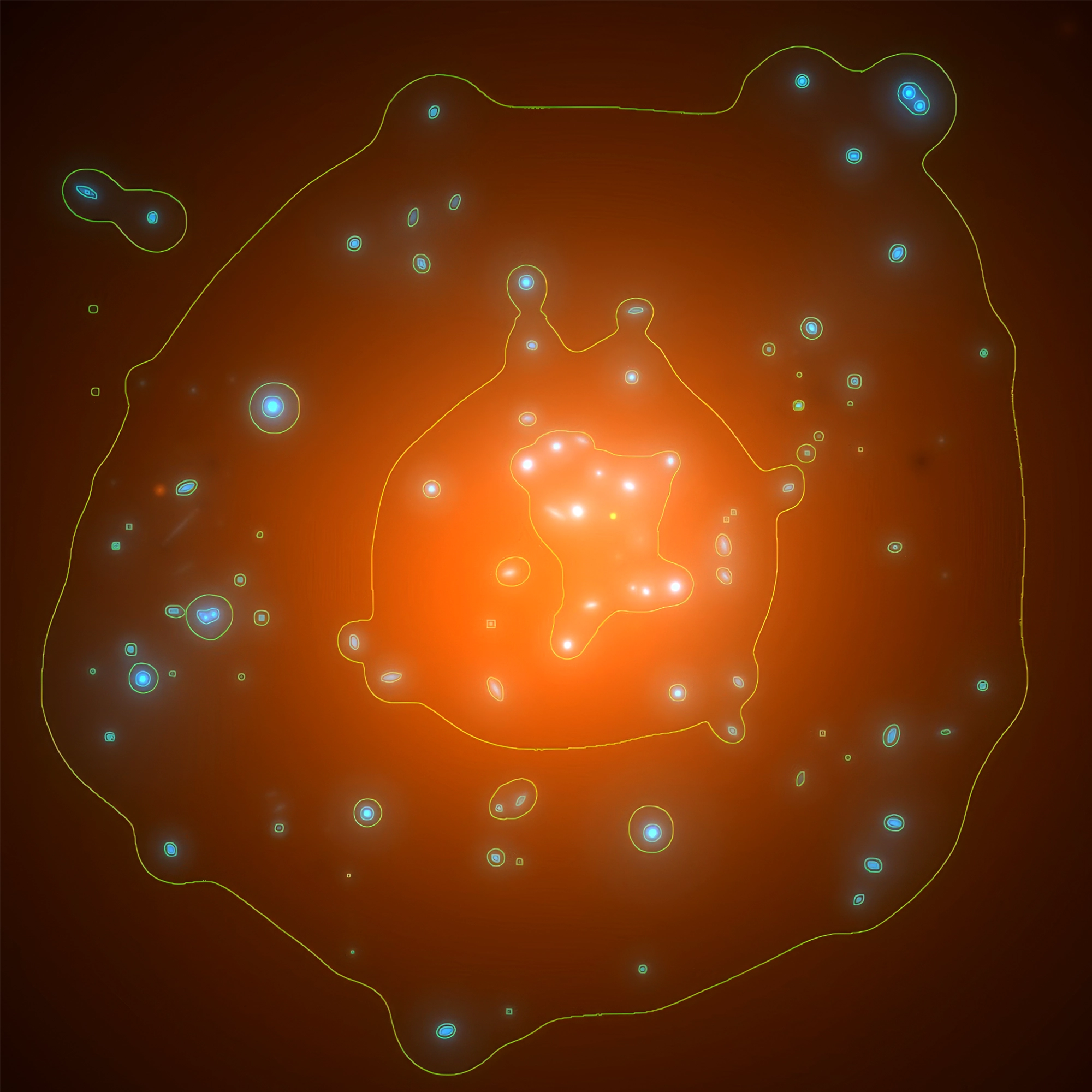
Tyson pioneered a method of inferring the distribution of dark matter from the way its gravity distorts the light of more distant galaxies. In this map that he and his colleagues made in the late 1990s, dark matter (depicted in orange) is smoothly concentrated near the center of the CL0024 galaxy cluster. Contour lines indicate step changes in density.
J.A. Tyson, G.P. Kochanski, and I. Dell’Antonio; Astrophysical Journal
And by comparing pairs of galaxies in every patch of the sky, we can also do something totally different than what’s been done before. With weak gravitational lensing, we can look back and see dark energy’s impact on dark matter through cosmic time. We can actually determine whether the expansion of the universe is speeding up or slowing down throughout time. It might be oscillating, who knows? Suppose the universe had a really funny behavior where it not only accelerates its expansion, but it decelerates and then accelerates again. We can detect this for the very first time if that’s true. This will add clarity to what dark energy might be.
Dark energy is an especially hot topic right now, because the DESI and DES surveys — which observed millions of galaxies, rather than billions — found hints that dark energy may be growing weaker. What do you think?
Well, we’re obviously making progress. I think it’s exciting. Although it’s a small signal, it’s suggestive. And it just gives even more justification for the Rubin Observatory to try to do this with very, very high precision.
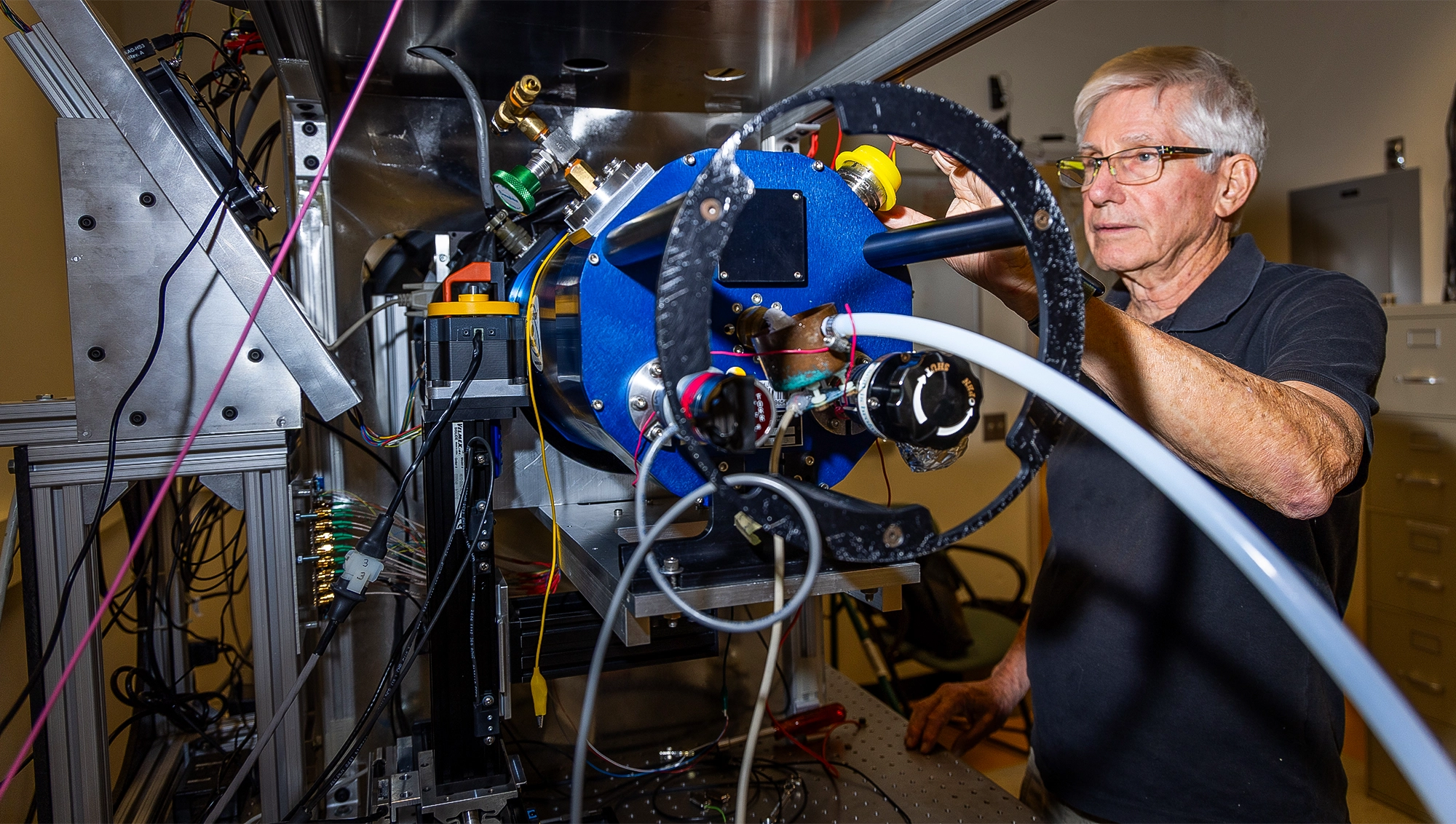
Tyson is shown in his lab with a “testing telescope” for experimenting with CCD sensors.
Rachel Bujalski for Quanta Magazine
What was it like to see Rubin’s first images?
It was gratifying to see something so beautiful. As a scientist, I usually look at data that contains this information, but it’s quite a different thing to actually see it with your own eyes — the gorgeous color and high dimensionality. It just blows people’s minds, including mine. I basically took my scientist hat off and looked at it from a child’s point of view.
What have other people’s reactions been — both scientists and nonscientists?
Curiously, the same reaction as mine: wow, with two exclamation points. They’re just blown away by the richness and the promise for discovery that is unique to the LSST. The excitement here in the auditorium today is just infectious.
What can we expect for the future? I imagine it’ll be a while before Rubin can answer any questions about dark matter or dark energy.
It’ll take a number of years because we have to have ultra-deep images of a wide swath of the universe. But I think already by year five, we’ll know quite a lot.
